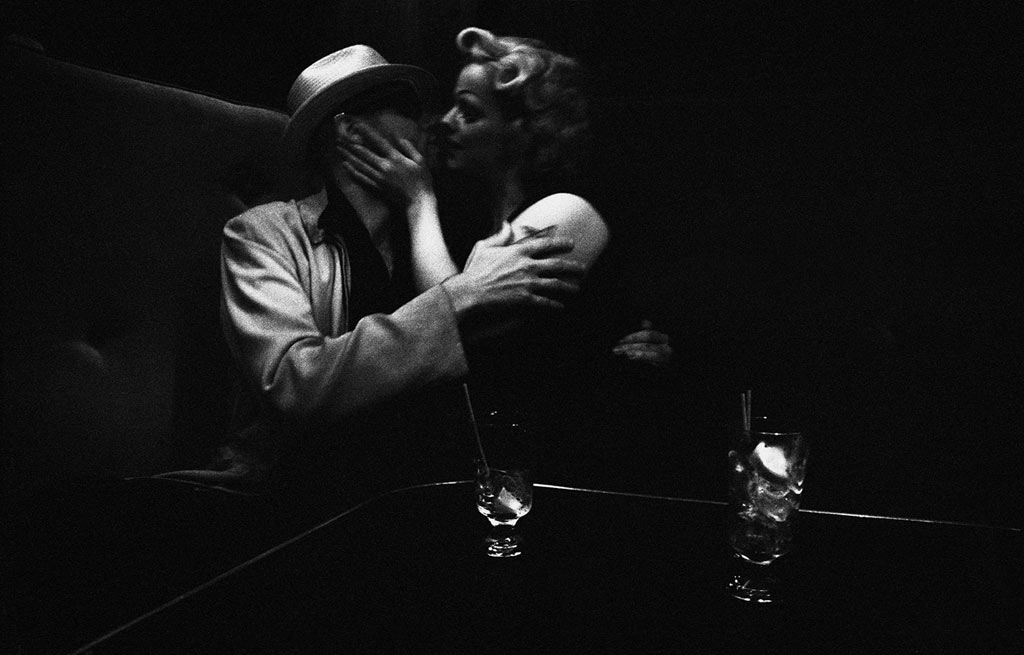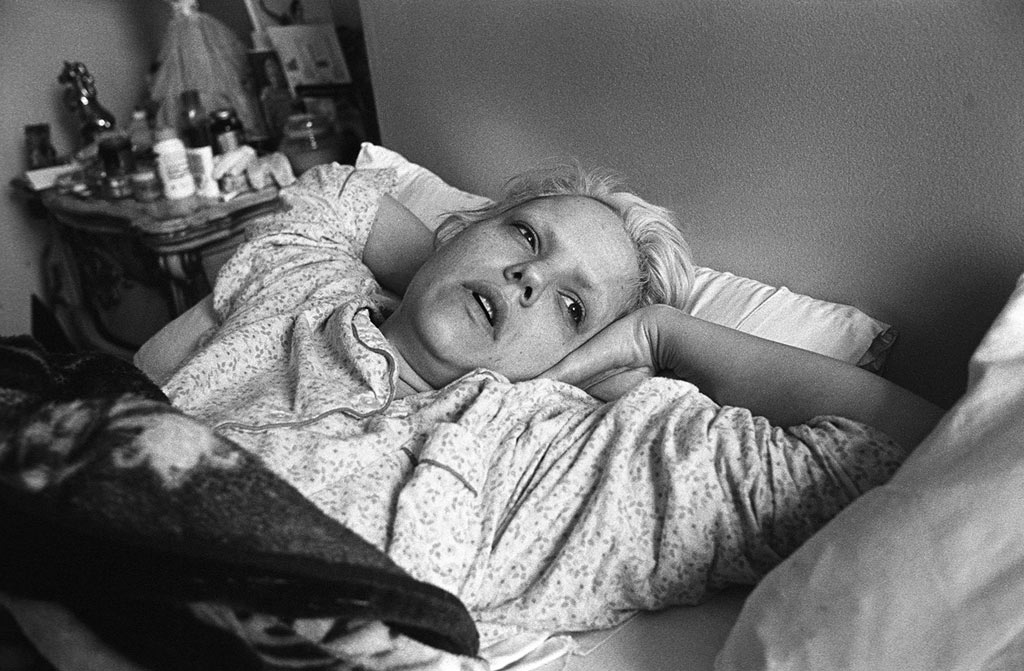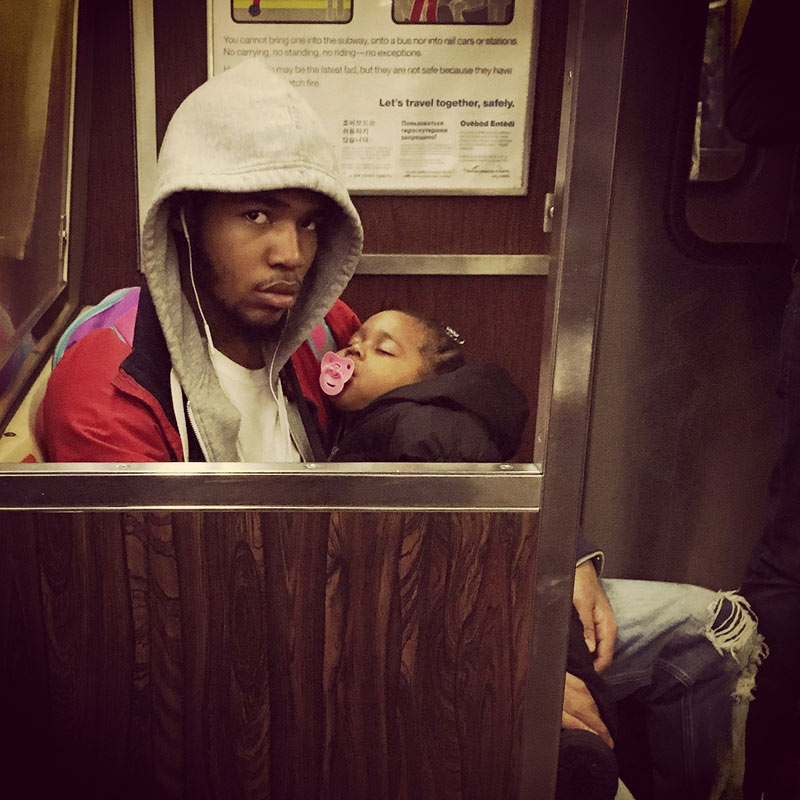An Interview with Amy Touchette
by Catalin CROITORU
 Hello, Amy Touchette! And thank you for accepting to share your thoughts with LENS MAGAZINE!
Hello, Amy Touchette! And thank you for accepting to share your thoughts with LENS MAGAZINE!
My pleasure. Thank you for having me!
You are a reputable photographer from New York City. Your “playground” is the streets of the metropolis. Please tell us how everything started.
Well, it was a pretty dramatic and emotional start, actually. I was working in New York City as a writer, editor, then managing editor and found the more my career progressed in corporate America, the emptier it felt. I remember feeling so depressed about the realization, because I loved writing from an early age, and I thought I was building the life I should. My solution was to not work so much overtime and instead spend more time on a large scale painting series I was working on at home, which was a really soothing experience at the time, a great departure from office life.

“With Pete,” from Shoot the Arrow:
A Portrait of The World Famous *BOB*
Copyrights to © Amy Touchette. All rights reserved.
But then a few months later, September 11th happened, and everything changed. I was living in the West Village, just a few subway stops from the Twin Towers. Outside was a city I did not recognize. My neighborhood was blocked off from traffic, odors of the most putrid smell of death and destruction constantly wafted in the air, and everywhere were posters with pictures of people’s loved ones they desperately hoped to find—all of whom were dead.
Once I got over the immediate shock of the event, the meaning of life and its gifts were suddenly so clear to me, and it caused me to completely reevaluate my life. Within a month I started taking photography classes, not even knowing what an f-stop was, but having a hunch photographing would offer me the life I desperately sought to have. And I it did. I quit my job after securing some freelance work and slowly started building a life as a photographer. It’s so strange to me that an event so tragic produced one of the best things that ever happened to me, but it did.

“Winter Morning,” from Shoot the Arrow: A Portrait of The World Famous *BOB*
Copyrights to © Amy Touchette. All rights reserved.
What do you feel when you are “on duty,” walking on the sidewalks and spotting your subjects? How do you choose your shooting spots or subjects?
When I’m out with the sole purpose of making pictures, I mostly feel alerted and happy. Walking the streets aimlessly and taking everything in is my favorite thing to do. But as soon as I see someone I want to photograph, I feel nervous and excited, almost like having too much caffeine. There’s definitely always an underlying fear of rejection at that point too, but photography forces me to confront that, which I love.
I’m not sure how to explain who and where I photograph. I know I love photographing in New York City because the population is so diverse and individuality is so expected here. But my reasons for making portraits—why I choose one person over the other—it’s not something I can put my finger on exactly. It starts with an intuition, a feeling of wanting to remember someone, and that’s all I really know about it.
Can you describe what means “a day” for Amy Touchette? Please do a description of it from the morning to the evening/night.

“G train, Brooklyn, 2016” from Street Dailies
Copyrights to © Amy Touchette. All rights reserved.
I support my fine art photography career largely as a freelance writer. Having no boss or set schedule means that I can keep photography my focus without having to rely on it to make money. So my days are really different from one to the next. This morning I finalized a writing document, then began responding to this interview. At some point in the afternoon my boyfriend will wake up (he’s a musician) so I’ll take a little break then. Later I’ll start framing some prints for a pop-up exhibition I’m having next weekend, go to a yoga class, return home to try to get more work done, make a post on Instagram, and then maybe meet a friend out for a drink. But tomorrow will be totally different, aside from yoga and Instagram, both of which I do almost every day.
I do have a more regular schedule in the summer, though, because that’s when I make a lot of my photography. In New York City, people are so much more open and colorful and accessible during the warmer months, so I concentrate on making work then and looking at the work—editing, sequencing, presenting, marketing, etc.—in the colder months. During summer days, I photograph from 3 pm to sundown every day, if possible, and try to fit everything else in around that. Working with the seasons this way is super relaxing; just being able to focus on certain parts of the process for long periods of time feels healthy and I think I can get deeper as a result, too.
Did you ever happen to have confrontational situations while you were taking pictures on the streets? What happened? How did you solve it?
It’s funny, so many people ask me this question! I understand why, but for the most part, my experience making street photography is far more amiable than it is caustic. Often people like being photographed (as Diane Arbus said, it’s a reasonable amount of attention to pay a person) or they’re unaware they’re being photographed, so 95 percent of the time, I photograph without incident.
That said, I have had a few interactions that have stayed with me, some of which I resolved well and others I failed at miserably. I try not to be too hard on myself when I don’t handle things the best way and just concentrate on receiving the lesson. But when my photographing does make someone angry, it’s because I’m using my iPhone and I didn’t ask permission beforehand. I usually start by telling them I’ll delete the photo if they want, but that I made it because the light was so nice, or they looked so beautiful, or happy, or peaceful—whatever was true for me at the time. This usually disarms them at least a little bit, because most people don’t know what street photography is or why someone would want to photograph a stranger.
I never photograph people who are in an unfair moment (picking their nose, crying, etc.) or who are down and out, so my reason for photographing is always respectful, a celebration of someone to some degree. This helps my case a lot, but some people still feel I’ve invaded their privacy—that I shouldn’t make their picture without their permission. If that happens, I’ll explain why candid moments are special and tell them the last thing I wanted to do was upset them. Throughout the conversation, it helps to restate their opinions so that they feel heard (“I understand you feel such-and-such a way”) and to be calm, and genuine, and friendly, and also articulate and secure about my passion for photography.
These interactions can be really tough, but actually, they’re the conversations I want to have. My camera is not a gun; it’s a piece of equipment I use to see other people and connect with them, even if it’s just for 1/125 of a second. I photograph people because I admire them for one reason or another, and I want to remember them. It’s important to me that I’m able to say that to another human being, that I can muster up the courage to say something that is ultimately so positive and constructive.

